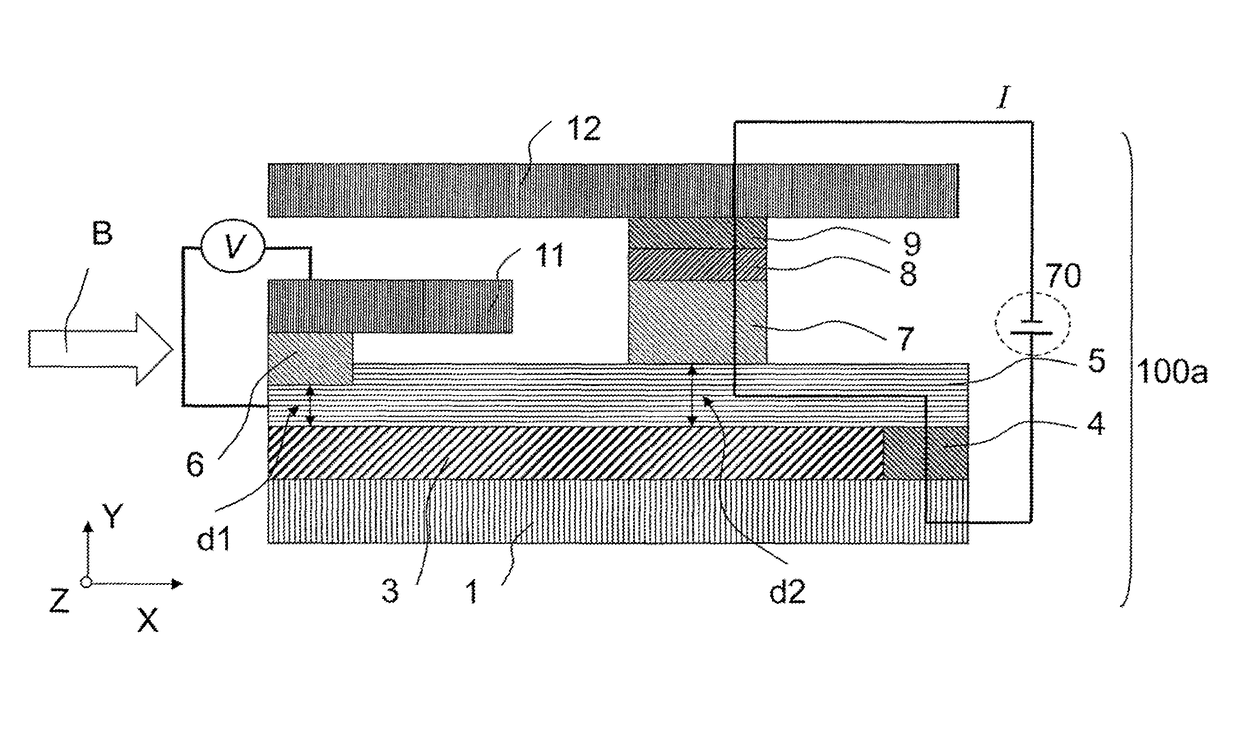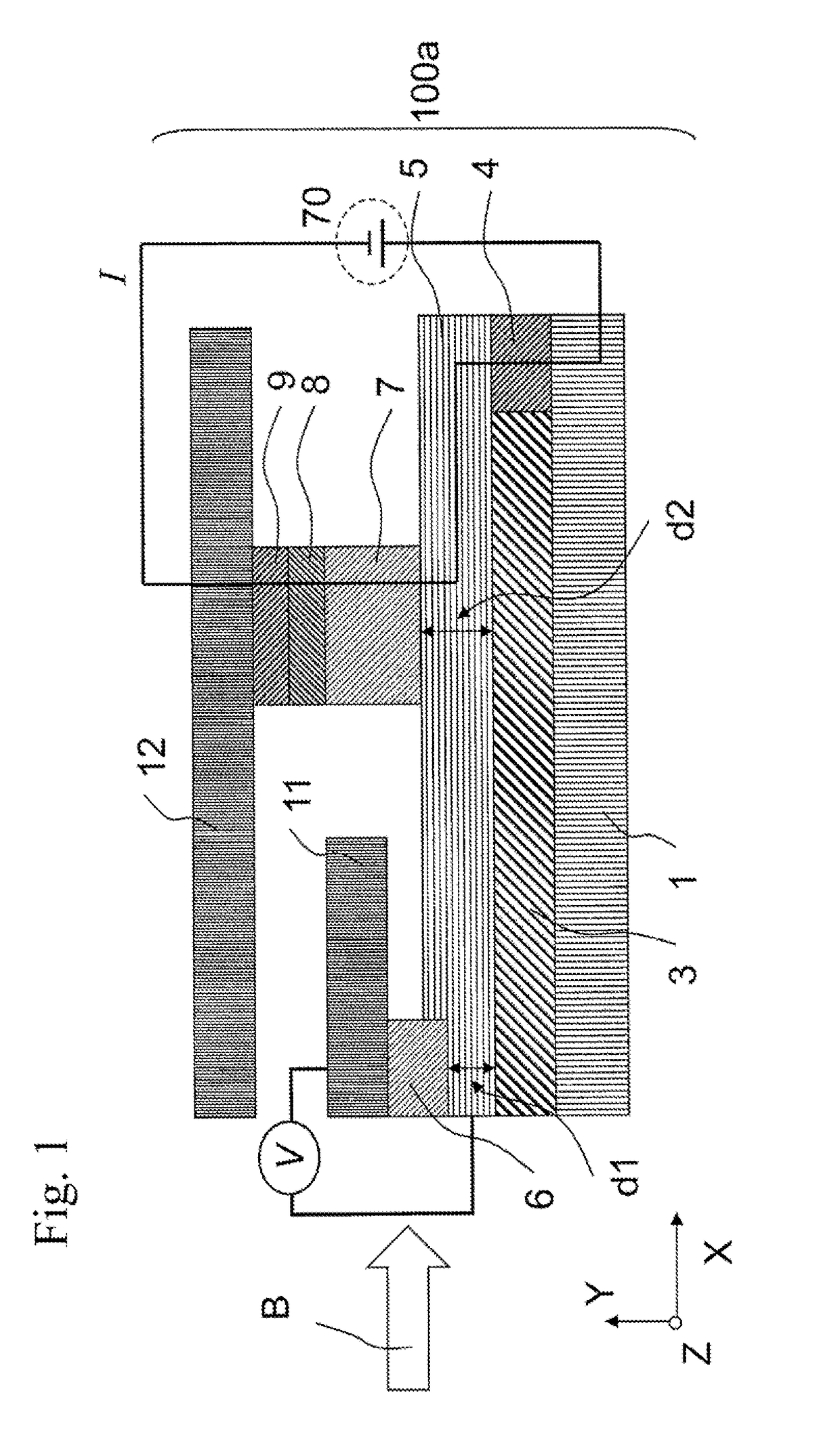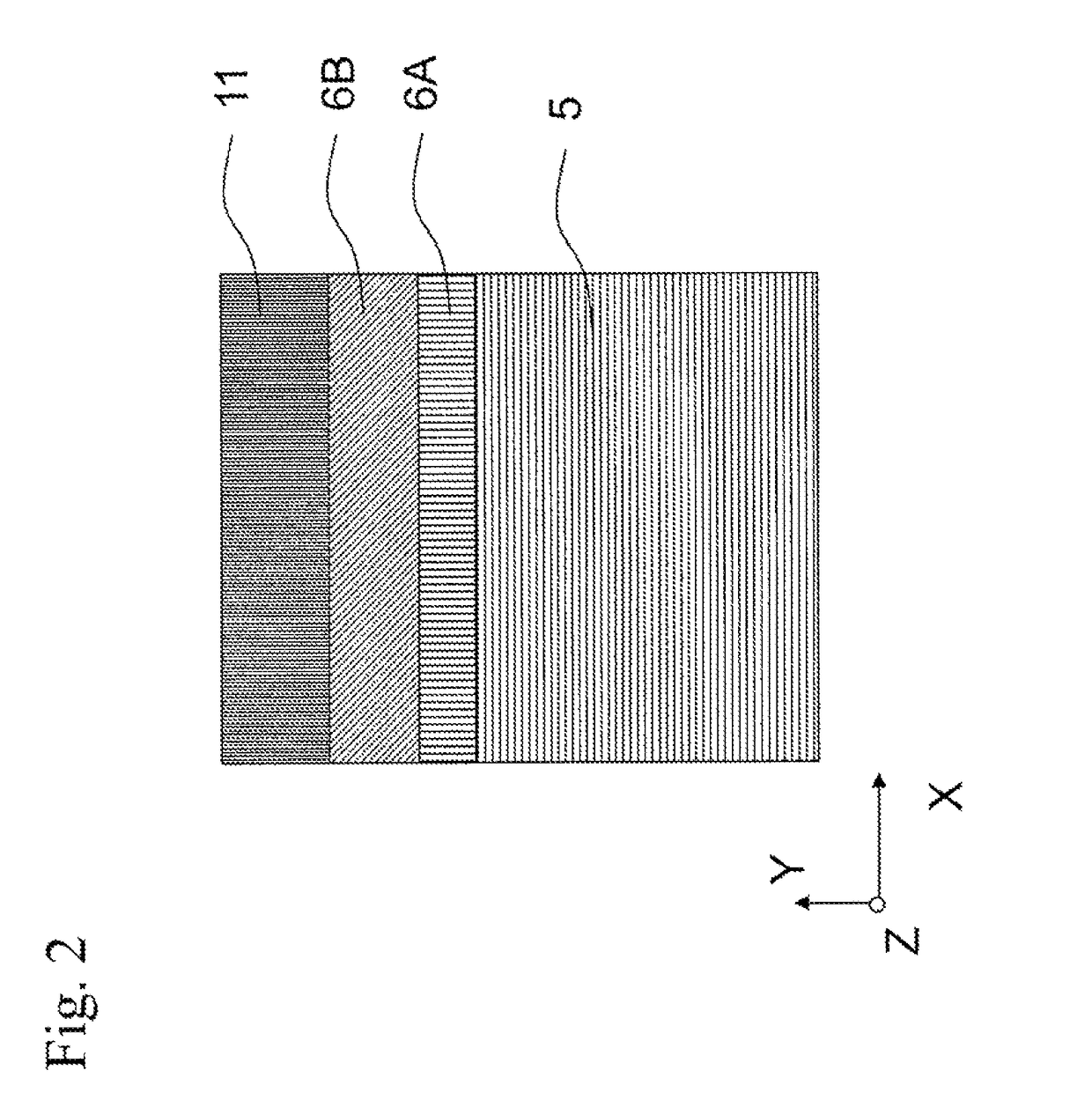Magnetic sensor, magnetic head, and biomagnetic sensor
a biomagnetic sensor and magnetic head technology, applied in the field of magnetic head, biomagnetic sensor, can solve the problems of noise caused by current applied between layers, low s/n ratio, and resistance of multi-layer films, and achieve high s/n ratio, high output, and high spatial resolution
- Summary
- Abstract
- Description
- Claims
- Application Information
AI Technical Summary
Benefits of technology
Problems solved by technology
Method used
Image
Examples
first embodiment
[0028]A magnetic sensor 100a according to a first embodiment of the present invention is described below with reference to FIG. 1.
[0029]The magnetic sensor 100a is placed on a substrate and is covered by a non-magnetic insulating layer made of alumina or the like. As shown in FIG. 1, the magnetic sensor 100a includes a channel layer 5 which accumulates and transports the spins of electrons and which includes a first section and a second section different from the first section, a magnetization free layer 6 placed on the first section of the channel layer 5, and a magnetization-fixed layer 7 placed on the second section of the channel layer 5. The magnetic sensor 100a further includes a lower magnetic shield layer 1, an upper first magnetic shield layer 11 facing the lower magnetic shield layer 1 with the channel layer 5 therebetween, an upper second magnetic shield layer 12 facing the lower magnetic shield layer 1 with the channel layer 5 therebetween, a first insulating layer 3 pla...
second embodiment
[0057]A magnetic head 100A according to a second embodiment of the present invention is described below. After the magnetic sensor 100a according to the first embodiment is prepared, a writing section is formed in the magnetic head 100A. The magnetic sensor 100a according to the first embodiment functions as a reading section in the magnetic head 100A.
[0058]FIG. 5 is a schematic view of the magnetic head 100A. The magnetic head 100A includes the magnetic sensor 100a and a recording head section 100b for writing. In the magnetic head 100A, the magnetic sensor 100a is used in a reading head section. The recording head section 100b includes a return yoke 30, a contact section 32 placed on the return yoke 30, and a main magnetic pole 33 placed above the return yoke 30. The return yoke 30, the contact section 32, and the main magnetic pole 33 form a magnetic flux path. A thin-film coil 31 is placed so as to surround the contact section 32. When a recording current is applied to the thin-...
third embodiment
[0060]FIG. 6 shows a biomagnetic sensor according to a third embodiment of the present invention. The biomagnetic sensor includes a plurality of biomagnetic sensors having the same configuration as that of the magnetic sensor 100a according to the first embodiment. As shown in FIG. 6, the biomagnetic sensor has a structure in which inter-element insulating layers 20 are arranged such that a spin current in each element does not flow into other elements.
[0061]When a current is applied between a magnetization-fixed layer 7 and channel layers 5, spins are injected into the channel layers 5. The spins injected into the channel layers 5 are transported to first ferromagnetic sub-layers 6B of magnetization free layers 6 and therefore output can be obtained depending on the relative angle between the magnetization direction of the first ferromagnetic sub-layers 6B and the direction of the injected spins. Magnetic flux entering in an X-direction turns the magnetization direction of each fir...
PUM
| Property | Measurement | Unit |
|---|---|---|
| thickness | aaaaa | aaaaa |
| thickness d1 | aaaaa | aaaaa |
| distance | aaaaa | aaaaa |
Abstract
Description
Claims
Application Information
 Login to View More
Login to View More - R&D
- Intellectual Property
- Life Sciences
- Materials
- Tech Scout
- Unparalleled Data Quality
- Higher Quality Content
- 60% Fewer Hallucinations
Browse by: Latest US Patents, China's latest patents, Technical Efficacy Thesaurus, Application Domain, Technology Topic, Popular Technical Reports.
© 2025 PatSnap. All rights reserved.Legal|Privacy policy|Modern Slavery Act Transparency Statement|Sitemap|About US| Contact US: help@patsnap.com



